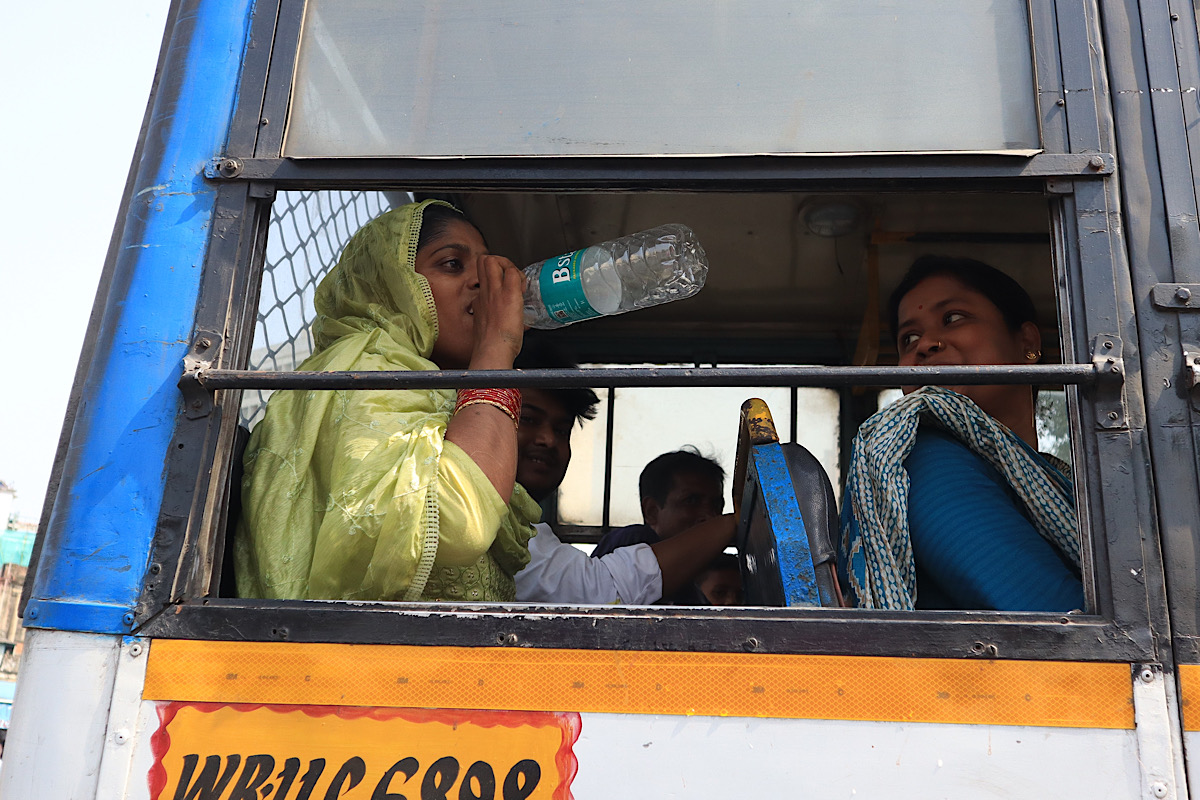India is being hit by one of its hottest heatwave ever, with many parts of the country experiencing consistent temperatures of over 50 degrees Celsius. An outlier temperature of above 52 degrees Celsius was reported in Delhi, but this is still being evaluated and rechecked, while city authorities also warned of a risk of water shortages and the power grid tripping. Delhi’s city record of 49.2 degrees Celsius from 2002 had been broken with temperatures reaching 49.9 degrees Celsius on 27 May 2024.
Climate change, predominantly caused by burning fossil fuels and exacerbated by human interference, is making heatwave hotter and more likely to happen everywhere in the world, according to scientists who study how extreme events are changing. Cities are more vulnerable to the compounding effects of urbanisation and climate change.
Advertisement
Dr Friederike Otto, Imperial College London and director of World Weather Attribution says,“This devastating heat is not a natural disaster. The suffering India is facing is worse because of climate change caused by burning coal, oil and gas and deforestation. What we are seeing in India is exactly what scientists said would happen if we didn’t stop heating the planet. To avoid making the problem worse, the world needs to end fossil fuel use. Unless we do it, terrible heat like this will happen more and more often, and it will get even hotter. The heat will become worse, and the death toll will continue to rise, fast.”
Dr Krishna AchutaRao, Professor and Dean, Centre for Atmospheric Sciences, Indian Institute of Technology, Delhi adds “The widespread, long-lasting and intense heatwave conditions over India and many other parts of the world are the direct result of climate change caused by human emissions of greenhouse gases. There is an urgent need to take adaptation steps to control the rising global average temperatures, else the result is in front of us.”
According to the IPCC, heatwave that occur once every 10 years without human-caused warming are now likely to occur 2.8 times more often (or once every 3.6 years) and are 1.5 degrees Celsius warmer because of climate change caused by burning fossil fuels. Extreme heatwave that occurred once every 50 years without human-caused warming are now likely to occur 4.8 times more often (or once every 10.4 years) and are 1.5 degrees Celsius degrees warmer. If emissions are not cut much faster than planned, they will become 2-3 times more common again. Elaborating on this further, Aarti Khosla, Director, Climate Trends comments, “Heatwaves are clearly the single largest threat to India’s well being today. Record-breaking heat of over 48 degrees Celsius across north, west and central India shows that climate crisis is a nice-to-push rhetoric as long as one hasn’t experienced a 50 degrees Celsius heatwave.
It is very concerning that annual trends in heatwaves now show temperature departures of 5-9 degrees Celsius from the normal summer weather. The latest research also shows that urbanisation alone has led to an overall 60 per cent enhancement in warming across Indian cities. This means that the more we develop new cities, the more we have to be mindful of not throwing people in the ditch with high heat.
“This is a wake up call for urgent transformations to reduce the impact of the heat island effect. Between 1970 and 2018, India’s urban population increased fourfold to 460 million. That’s more than one-third of Indians living in extreme vulnerability to climate threats, impacting both productivity and health.”
Extreme heat forced schools to close early for the summer in India. Temperatures in at least 37 cities exceeded 45 degrees Celsius, with warnings of a ‘very high likelihood’ of heat illnesses for the entire population. Night time temperatures remained as high as 36 degrees Celsius in some locations – which is particularly dangerous as it means people cannot cool off at night. There have been over 16,000 heat stroke cases and 60 heat-related deaths since March 2024, although this number is likely a huge underestimate. Aditya Valiathan Pillai, Fellow, Coordinator – Climate Adaptation and Resilience, Sustainable Futures Collaborative says “Delhi sustained high temperatures nearing the 50s brings the focus back on its Heat Action Plan. In this infernal heat, millions of heat-exposed workers without access to cooling will struggle to earn their wages, protect their families and stay safe. Heatwave preparedness and response measures in Delhi’s newly minted Heat Action Plan must be implemented immediately.
“Of equal importance are long term solutions like trees, changing how buildings are structured and reducing the density of built areas to combat the urban heat island effect.”
Heat in India and South Asia is characterised by being extremely humid, which makes it more dangerous for human health. High humidity levels prevent the body from cooling itself through sweating, raising the risk of heat strokes and other life-threatening conditions. The combination of intense heat and humidity poses life-threatening risks to the population, exposing the population to conditions that exceed human tolerance. This risk is further increased in cities, as they are often warmer than rural areas. Dr Arun Sharma, Professor, Community Medicine comments “Exposure to high atmospheric temperatures is harmful for the human body. Prolonged exposure to such high temperatures can cause heat stroke. It is recognised by fever above 104 degrees Fahrenheit, dry skin and loss of consciousness. High temperatures may also cause sunburn, irritation in the eyes and dehydration.
“To protect and avoid exposure to direct sunlight, use an umbrella and sunglasses. Keep the body hydrated with frequent, small intakes of water, fruit juice, coconut water, lemon drinks, etc. Avoid going out in extreme heat conditions. Sunscreen lotions also help protect against adverse effects on the skin. If eyes start itching, wash frequently with clean, cold water. Avoid sudden changes in temperature, like walking out of air-conditioned rooms straight into sunlight and vice versa.”











